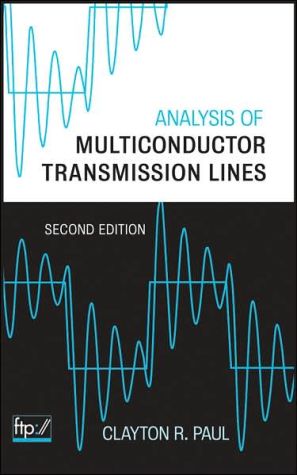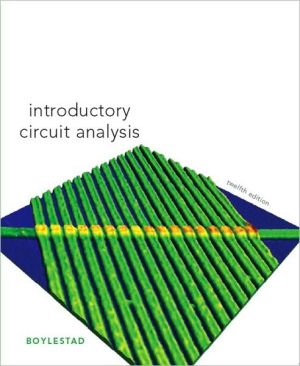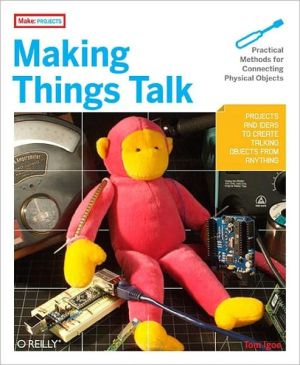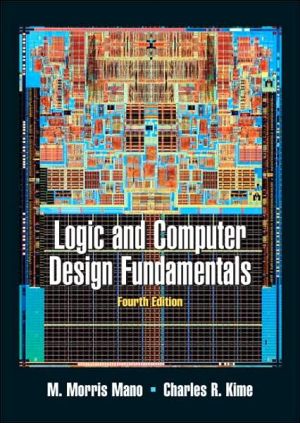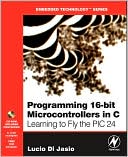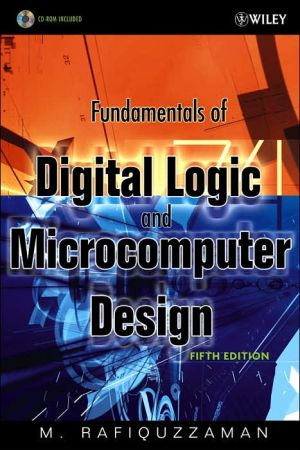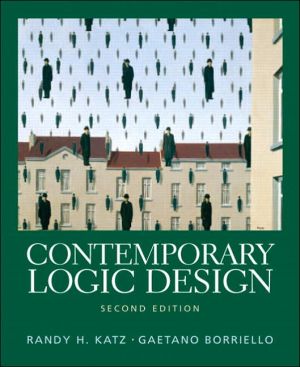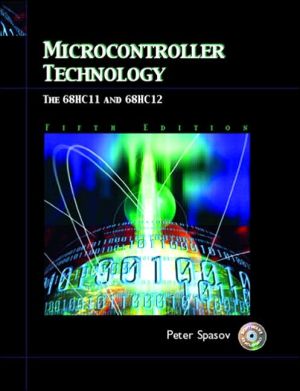Analysis of Multiconductor Transmission Lines
The essential textbook for electrical engineering students and professionals-now in a valuable new edition\ The increasing use of high-speed digital technology requires that all electrical engineers have a working knowledge of transmission lines. However, because of the introduction of computer engineering courses into already-crowded four-year undergraduate programs, the transmission line courses in many electrical engineering programs have been relegated to a senior technical elective, if...
Search in google:
The essential textbook for electrical engineering students and professionals-now in a valuable new edition The increasing use of high-speed digital technology requires that all electrical engineers have a working knowledge of transmission lines. However, because of the introduction of computer engineering courses into already-crowded four-year undergraduate programs, the transmission line courses in many electrical engineering programs have been relegated to a senior technical elective, if offered at all. Now, Analysis of Multiconductor Transmission Lines, Second Edition has been significantly updated and reorganized to fill the need for a structured course on transmission lines in a senior undergraduate- or graduate-level electrical engineering program. In this new edition, each broad analysis topic, e.g., per-unit-length parameters, frequency-domain analysis, time-domain analysis, and incident field excitation, now has a chapter concerning two-conductor lines followed immediately by a chapter on MTLs for that topic. This enables instructors to emphasize two-conductor lines or MTLs or both. In addition to the reorganization of the material, this Second Edition now contains important advancements in analysis methods that have developed since the previous edition, such as methods for achieving signal integrity (SI) in high-speed digital interconnects, the finite-difference, time-domain (FDTD) solution methods, and the time-domain to frequency-domain transformation (TDFD) method. Furthermore, the content of Chapters 8 and 9 on digital signal propagation and signal integrity application has been considerably expanded upon to reflect all of the vitalinformation current and future designers of high-speed digital systems need to know. Complete with an accompanying FTP site, appendices with descriptions of numerous FORTRAN computer codes that implement all the techniques in the text, and a brief but thorough tutorial on the SPICE/PSPICE circuit analysis program, Analysis of Multiconductor Transmission Lines, Second Edition is an indispensable textbook for students and a valuable resource for industry professionals. Booknews A textbook for a senior or graduate-level course in an electrical engineering curriculum on the subject of the analysis of multiconductor transmission lines (MTLs). While it clearly and concisely describes all existing methods for analyzing MTLs, its main objective is to cut through the morass of MTL analytical methods to demonstrate the core techniques upon which they are all based. Includes a diskette containing PC-compatible FORTRAN codes, each of which implements one of the solution methods discussed in the text. Annotation c. Book News, Inc., Portland, OR (booknews.com)
Preface1Introduction1Examples of Multiconductor Transmission-Line Structures4Properties of the Transverse ElectroMagnetic (TEM) Mode of Propagation7Derivation of the Transmission-Line Equations for Two-Conductor Lines13Classification of Transmission Lines26Restrictions on the Applicability of the Transmission-Line Equation Formulation302The Multiconductor Transmission-Line Equations46Derivation from the Integral Form of Maxwell's Equations46Derivation from the Per-Unit-Length Equivalent Circuit56Summary of the MTL Equations57Properties of the Per-Unit-Length Parameter Matrices L, C, G583The Per-Unit-Length Parameters64Definitions of the Per-Unit-Length Parameter Matrices L, C, G65Multiconductor Lines Having Conductors of Circular Cylindrical Cross Section77Multiconductor Lines Having Conductors of Rectangular Cross Section113Miscellaneous Additional Techniques153Shielded Lines156Incorporation of Losses; Calculation of R, L[subscript i], and G1574Frequency-Domain Analysis186The MTL Equations for Sinusoidal Steady-State Excitation186Solutions for Two-Conductor Lines189General Solution for an (n + 1)-Conductor Line194Solution for Line Categories219Lumped-Circuit Iterative Approximate Characterizations231Alternative 2n-Port Characterizations234Power and the Reflection Coefficient Matrix236Computed Results2385Time-Domain Analysis252Two-Conductor Lossless Lines253Multiconductor Lossless Lines275Incorporation of Losses3206Literal (Symbolic) Solutions for Three-Conductor Lines359Frequency-Domain Solution363Time-Domain Solution371Computed Results3837Incident-Field Excitation of the Line395Derivation of the MTL Equations for Incident-Field Excitation395Frequency-Domain Solutions405Time-Domain Solutions4448Transmission-Line Networks489Representation with the SPICE Model492Representation with Lumped-Circuit Iterative Models492Representation via the Admittance or Impedance Parameters494Representation with the BLT Equations508Direct Time-Domain Solutions in terms of Traveling Waves517Publications by the Author Concerning Transmission Lines525Appendix A Description of Computer Software531Index553
\ BooknewsA textbook for a senior or graduate-level course in an electrical engineering curriculum on the subject of the analysis of multiconductor transmission lines MTLs. While it clearly and concisely describes all existing methods for analyzing MTLs, its main objective is to cut through the morass of MTL analytical methods to demonstrate the core techniques upon which they are all based. Includes a diskette containing PC-compatible FORTRAN codes, each of which implements one of the solution methods discussed in the text. Annotation c. Book News, Inc., Portland, OR booknews.com\ \
